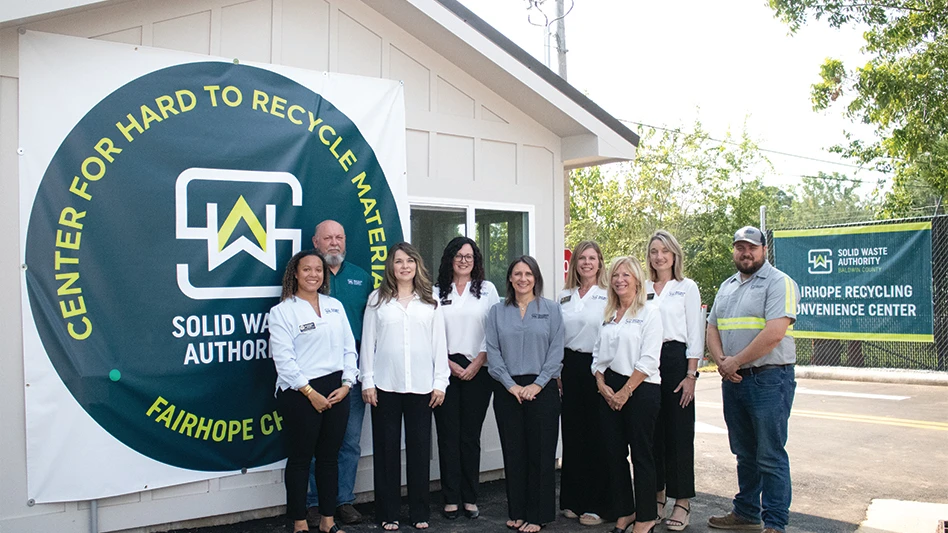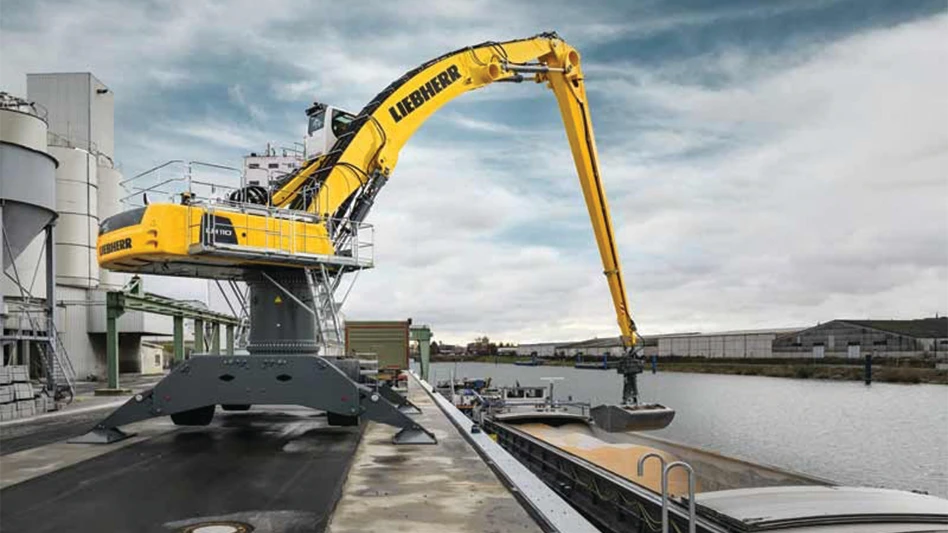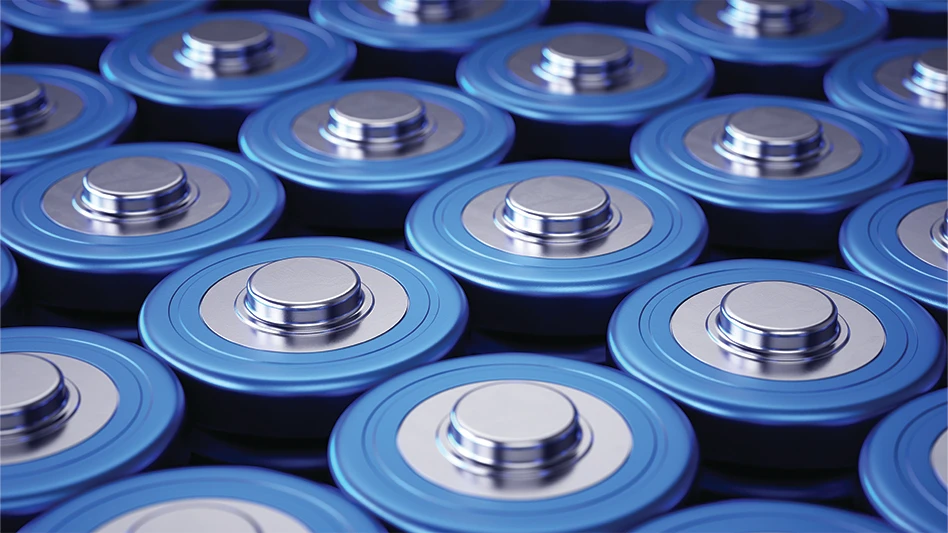 Recycling company ReCommunity, based in Charlotte, North Carolina, operates under the principle that stopping a baler for maintenance purposes should not have to derail operations.
Recycling company ReCommunity, based in Charlotte, North Carolina, operates under the principle that stopping a baler for maintenance purposes should not have to derail operations.
It may be for that reason that many of the company’s 32 material recovery facilities (MRFs) incorporate baler redundancy, in which the facilities’ balers have the ability to reasonably handle any of the commodities to be baled, says Will Herzog, ReCommunity director of marketing.
That means, for example, that either of a facility’s two balers could be used to process fiber and containers. While one baler typically handles fiber and the other is slotted for containers, if the need arises—say for maintenance projects—each baler can serve as a backup for the other.
“The way the sorting system is laid out allows us to have both fiber and all of the containers able to be fed to one or the other baler,” Herzog explains.
This type of functionality makes sense these days, particularly for high-volume facilities, says Nathiel Egosi, president of RRT Design & Construction (RRT), Melville, New York. And MRF operators around the country explain that having at least some level of redundancy should be part of doing business.
Volume considerations
“Redundancy by definition means having two of something,” says Egosi. Toward that end, he agrees, “people are putting in more than one baler.”
He says the need for redundancy becomes particularly acute for high-volume facilities—those processing anywhere from 20 tons per hour and up. Facilities at the higher end of that range, he says, absolutely need redundancy. At a level between 200 and 300 tons per shift, Egosi says, “you couldn’t operate without it.”
Egosi says redundancy also makes particular sense for high-volume facilities with very little storage space on either the incoming or outgoing sides.
Another factor in ensuring redundancy is choosing balers that can handle all the work. On this point, Egosi advocates the notion of full redundancy, where both machine can stand in for the other.
“You have to buy each machine so that in the event one is down, the other machine can do all the work.”
If it sounds like overcapacity, Egosi acknowledges, that’s not coincidental.
“It has to be oversized to be truly full redundancy,” he says. In fact, Egosi adds, “When both machines are running, the MRF basically has double the capacity.”
Egosi says, however, that the two balers installed need not be the exact same model. In fact, he adds, most of the time, they’re not. He likens it to a family’s selection of automobiles: “If you’re going to buy two cars, would you buy the exact same car?”
Egosi explains that while each machine is typically selected for its strength in handling the commodity it will most often process, flexibility of operations should be another factor.
“If you want true redundancy, you have to buy one machine that can do the entire job even when the other machine is down,” he says. “You can’t take your workload, cut it in half and then say you have redundancy, because the machine won’t be able to do it unless you run a second shift.”
While that in itself may be a strategy for some, such a plan also requires the facility to have storage space for commodities awaiting baling, Egosi points out.
“Different people approach the problem of redundancy differently,” he says. If the plan is to bale materials on a second shift, “then you need to have storage space for the accumulated material.”
Different paths to redundancy
As Egosi indicates, achieving baler redundancy can occur in a number of ways. As such, selecting the right strategy depends on a number of variables at the MRF level, such as when it was built or how much floor space is available. Different businesses will require different degrees of redundancy, sources say.
Along those lines, it’s not just the type of balers installed that allows a MRF to have redundancy. As industry examples indicate, the conveying arrangements within a facility also can make or break its balers’ redundancy.
In some ReCommunity facilities, for example, balers are installed on opposite sides of commodity sorting areas, Herzog explains. He refers specifically to a few of the company’s Arizona MRFs.
“We have the commodities being sorted into live floor bunkers, and the baler infeeds are on either end of the live floor bunkers,” he says.
Because the conveyors can be run in either direction, they are able to feed either baling system with any of the commodities.
“Essentially the floors of the bunkers that we sort commodities into are conveyor belts, so we can have the conveyor belts run to the right, and it will feed one baler, or to the left, where it will feed the other baler,” Herzog says.
While certain commodities are preferentially directed to a certain baler, in the event of a maintenance project on one of the balers, material can be fed to the baler on the opposite side.
And, as expressed by Egosi, in ReCommunity’s case, many times different baler models are part of the plan.
“Typically, it’s different balers targeting different streams,” Herzog says. That could mean using a two-ram baler to process bottles and cans and a single-ram baler for paper and cardboard. And while that’s not always the case, Herzog says, “that’s something we’ve seen.”
He refers to ReCommunity’s San Antonio plant, which has that arrangement. The plant still has full redundancy, he says, as its bunkers are connected via conveyors set up to feed either baler with the various recyclables produced, Herzog says. Even though the balers aren’t the same, he says, each could still keep up with the volume.
“The two-ram baler is not necessarily ideal for high-volume paper processing,” he acknowledges. “It doesn’t mean it can’t work,” Herzog adds.
An alternate conveying arrangement that allows for redundancy, Egosi says, is the use of a diverter gate on top of each baler. Incoming material can be diverted to another conveyor belt that takes the material to the backup baler. Egosi says this method is often employed within existing plants rather than in newly constructed facilities.
“The simple solution often is to put in a diverter and take material to one baler and then transfer it over to the other,” he explains.
A similar approach was taken by Rhode Island Resource Recovery (RIRR), Johnston, Rhode Island, in 2012 when the company converted its dual-stream recycling line to single-stream processing at a rate of 50 tons per hour, says Brian Dubis, operations supervisor.
The resulting retrofit included a new baler and conveyors for containers, plus a diverter gate for the container stream. This allowed RIRR the capability to use its fiber baler for containers should that ever be necessary. The facility now processes a volume of close to 130,000 tons per year, Dubis says, and about 60 percent of the stream is fiber.
All materials are baled by the plant’s two fully automatic prepress balers: a Bollegraaf HBC140 for fiber and the newer Bollegraaf HBC120 for plastics, ferrous and aluminum.
Dubis says the MRF’s setup offers some level of backup, should the HBC120 ever be out of service, but it’s not 100 percent redundancy.
“We can shift our containers through our fiber line, but we can’t shift our fiber through our container side,” he says.
To make the switch, all that’s required is engaging the bypass flap. The floor conveyor from the container line lifts at a fairly steep angle to allow for the crossover of containers, he explains.
The high-capacity HBC140 is suited to handle the volume of both fiber and containers well, Dubis says.
As an added option, he says each of the balers also has redundancy in terms of wire tying, because the balers feature cross-tying systems. “If we were to have a problem we can switch over to the other system,” Dubis says. “We don’t use it all that often, but it’s nice to have.”
Making a compromise
As the experience of RIRR indicates, partial redundancy is an option that makes sense in many cases.
Egosi says opting for partial redundancy may have to do with a facility’s existing design as well as the recycler’s perceptions about whether there’s a need for backup on all machines. It also tends to be a very common solution.
Dubis says he considered 100 percent redundancy, even to the point of calculating the costs and plan ideas, when the retrofit was planned in 2011.
“That would have required a couple of conveyor expansions, and the footprint of the additional equipment would have taken up too much space,” he explains. “We weighed the consideration against the amount of time and space it would have taken, and it wasn’t worth it.”
Another factor that was considered, Dubis says, was the 18 years of experience he’s had with the balers themselves. “The Bollegraaf balers, from my perspective, are bulletproof. We really don’t have any problems with them, so it wasn’t worth the time and effort to try to build in a workaround.”
He says downtime on the balers represents less than 10 percent of all the downtime that occurs at the facility.
Another facility with partial baler redundancy is Diversified Recycling, the recycling subsidiary of Homewood Disposal, based in East Hazel Crest, Illinois, just south of Chicago.
The company expanded its three-year-old system in 2013 to incorporate new technology and to better handle changing material streams and markets. The single-stream MRF serves roughly 75 Midwest communities and has a processing capacity of around 50 tons per hour.
Jon Shroeder, plant manager, says the small upgrade completed in 2013 affected parts of the four-year-old single-stream line but not the two existing balers.
Like RIRR, Diversified uses an HBC140 for fiber and an HBC120 for containers. The upgrade increased the capacity of the facility to 50 tons per hour; however, some of the commodity bunkers were reused.
Shroeder says the container baler could theoretically bale fiber if necessary, should the fiber baler ever go out of service. What allows this is the reversible conveyor serving the fiber bunker.
“The bunker conveyor can go either direction, either to one baler or to the other,” Shroeder says. He explains that the balers are located on opposite ends of the processing area, but the conveyor serving the cardboard and news bunkers can go to either baler’s infeed.
“It’s just running [the conveyor] in the opposite direction, and you open the other door and you can go to the container baler,” he says.
Meanwhile, Egosi points out that having baling redundancy built in to a particular plant doesn’t necessarily mean operations are business as usual. “When going into backup mode,” he says, “don’t expect to be running at the same capacity as normal.”
It’s an idea that once again relates to having spare capacity. “You can transfer material, but the material processing has got to keep up,” he says.
The author is a managing editor with the Recycling Today Media Group and can be reached at lmckenna@gie.net.
Get curated news on YOUR industry.
Enter your email to receive our newsletters.

Explore the February 2015 Issue
Check out more from this issue and find your next story to read.
Latest from Recycling Today
- Dow, Mura Technology cancel chemical recycling plant in Germany
- Brightmark, Lewis Salvage partnership processes 1M pounds of medical plastics
- US paper recycling rate, exports down in '24
- Century Aluminum to restart idled production at South Carolina smelter
- Teaching kids the value of recycling
- ELV Select Equipment, Reworld aid NYPD in secure firearm disposal
- Some observers fear plastics treaty talks veering off course
- Advanced Polymer Recycling acquires TKO Polymers






